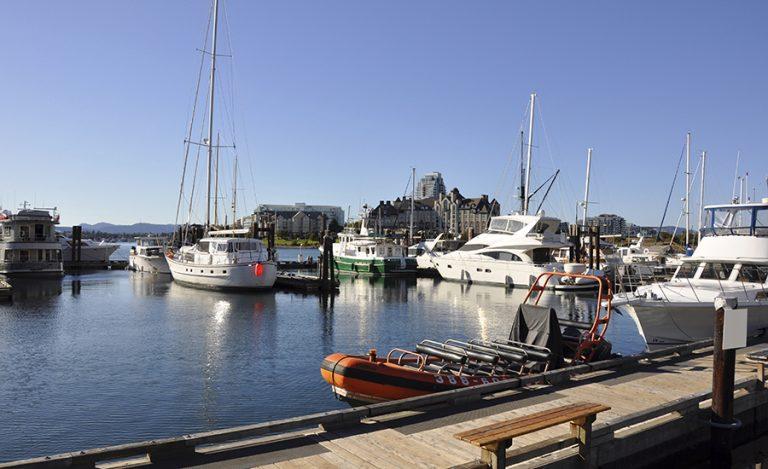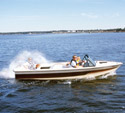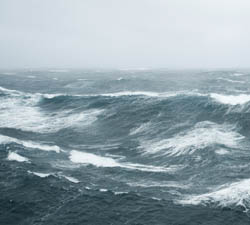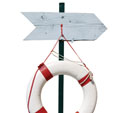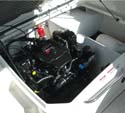First Aid and Hero Training
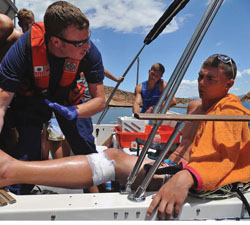
No one plans for an accident to happen while boating, but if it did, are you prepared? Is there a first aid kit on board? Is it easily accessible and fully stocked? Does anyone on board even know how to use it?
Could you be the hero, or will you be just a bystander? Safety can be a hard sell. In Vancouver, Western Marine Company’s Alan Stovell said simply, “There is no requirement for first aid kits for recreational boaters.”
He points out while commercial boaters must abide by strict regulations based on the crew and voyage there are no such restrictions for pleasure boaters in Canada, although it’s certainly recommended. “Safety is a hard sell. Recreational boaters want to buy only what they have to have.”
It’s a different story in other aspects of the boating industry. “For those going further afield and offshore racers, it is top of mind,” Stovell said. But even then he pointed out it is a race committee requirement not a legislative requirement. “The vast majority of people don’t give safety a second thought.”
It’s not a major investment.
Western Marine Company stocks and sells a number of easy-to-carry marine first aid kits like the N300, a basic kit that retails for about $30 and includes gloves, disinfectant, antiseptic wipes, bandages etc. At $75 the N302 is a more complete kit with rescue blanket, eye pads, splinter forceps, scissors, tensor bandage etc.
First aid kits can of course be personalized, including such additional equipment as Gravol or ginger for sea sickness, epi-pens for allergies or other specific medication.
Jean Pierre Molin, program manager with the Ontario branch of the Life Saving Society recommends, “Consider ‘where am I going?’ and for how long and tailor-make the kit to who is coming along. Is it an offshore adventure or maybe you’re going sailing but you’ll also be going up the trail when you’re anchored. Any time you are on the water it takes more time to get to EMS.” Although not technically part of a first aid kit he said it’s essential to have a VHF radio, cell phone or satellite phone. “Communication for quick and effective EMS activation is important and always know your location.”
But regardless of the specific contents of the kit does anyone onboard know how to use it?
“First aid courses should be the first thing you’re thinking,” Molin said. “This is a revision year so if you haven’t taken a course in a while now’s a great time. What you learned two or three years ago is still applicable but there have been changes. The resuscitation standards have changed.”
First aid courses will help prepare boaters for common injuries such as burns from barbecues or propane tanks or even rope burns from holding on to the halyard too long. Molin pointed out, “Most injuries happen on the way out of the boat – tripping, getting tangled or falls with sprains, strains and head injuries.”
Effective first aid treatment even at a rudimentary level improves healing and survival rates.
First aid training can be as short as one day or two days, or longer for more advanced training. It’s well worth the investment. As Molin said, “Statistics show that 80 per cent of victims are someone you know, family, friend or coworker.”
St. John Ambulance is one of the world’s oldest humanitarian organizations and has been in Canada since 1883. Each year the organization trains over 550,000 Canadians in first aid and CPR.
Glenna Owen of St. John Ambulance at 80 Bradford St. in Barrie, Ont. said there are a variety of courses available.
She explained Emergency First Aid is a one-day course offered for $109 and is available several times a week covering things like shock, choking and severe bleeding. The two-day Standard First Aid course costs $149 and also covers wound care, burns and poisons. It can be taken with either Level A CPR for adults or Level C which includes infant, child and adult CPR. Owen said level C is recommended as chances are there will be a kid or baby in your life. This course is also offered regularly each and every week.
For boaters there is a two-day Marine First Aid course for $169. Along with course material from Standard First Aid this extended course covers information on anatomy and physiology, artificial respiration for a stoma casualty, toxicological hazards, confined spaces and radio medical advice – all electives pre-selected by Transport Canada. While it is recommended for those in commercial shipping it’s certainly useful information for those thinking of living aboard for long periods of time, off-shore travel or that dream trip south.
St. John also sells speciality first aid kits designed for specific activities such as marine, family, pet, sport, vehicle and workplace. She said the marine kit sells for about $34.
Moulin said with the advancing age of many boating enthusiasts some people are also considering carrying an Automated External Defibrillator or AED on board. “With the price point it may not be their first choice but it has high survival rates. The time from ‘drop to shock’ is crucial. The shorter that window of time, the higher the survival rate. An AED is a significant survival tool.”
An AED talks the rescuer through administering a shock to restart the heart of a cardiac victim.
AED information is now part of all standard and emergency first aid courses. “You cannot take a course in Ontario without at least a minimum introduction of AED,” Molin said. “Candidates will have to use it. Think of it as another first aid tool.”
He said another important thing to consider is the first aid kit’s location. It must be somewhere easily accessible and stored in a container to reduce moisture and exposure to extreme temperature fluctuations. “It varies per boat type. The galley may be the perfect spot on some boats but maybe not on others. And make sure it’s not locked.” No one wants to be fumbling with a lock or trying to remember a combination in a stressful emergency situation.
Once the kit is installed it’s not a case of forget it until it’s needed either. Like a pre-flight checklist Moulin said first aid kits should be checked as part of an annual and mid-season vessel inspection. Check that sterile packages are still air-tight and intact with no moisture damage and refill and replace as necessary.
As Stovell said, “Usually if it’s half used up they throw it away and get a new one but you could easily go to the drug store and refill the basics.”
If carrying an AED verify the signal strength regularly and replace the batteries and pads every two years.
Along with a first aid kit and training Molin said probably the most important thing boaters can do to stay safe on the water is learn how to swim and wear a lifejacket. “Well over 500 Canadians a year lose their life to drowning.”
It doesn’t take much to be a hero, you just need to be prepared.
By Jennifer Harker


